Cancer is a major global social, public health and economic problem, causing huge social and economic losses. There were close nearly 20 million new cancer cases and 9.7 million deaths from cancer in the year 2022, and according to the prediction, the number of new cancer cases worldwide may reach 35 million or more by 2050 (1). Therefore, it is very important to find the pathogenesis of cancer to prevent and treat cancer. Metabolic reprogramming (MR) of tumor cells is a hallmark of malignancy (2). Due to the scarcity of nutrients in the tumor microenvironment (TME), tumor cells must adopt a variety of metabolic adaptations and exhibit rapid adaptive responses to hypoxia and malnutrition conditions to meet their growth needs (3, 4), and this phenomenon of bioenergetic changes in tumor cells is known as MR of cancer (CA) (5). In the past two decades, due to the rapid development of cancer metabolism research, MR/CA research has received increasing interest and widespread attention (6). Multiple studies (2, 4, 7) have shown that MR plays a key regulatory role in the incidence, development, and treatment of cancer, and the modulation of MR may be an approach for preventing and treating CA.
Bibliometrics, the application of mathematics and statistical methods to books and other media of communication, offers a range of advantages for analyzing scholarly literature and research impact. Bibliometrics offers a means to assess the impact of individual research contributions, journals, and even entire institutions based on citation data and other indicators, enabling the processing of vast amounts of data that would be impractical to analyze manually (8). Over the last twenty years, exploring the intricate connection between MR and CA has gained significant momentum, resulting in an influx of groundbreaking studies that have garnered immense attention. However, there is currently no research on the quantitative investigation of MR/CA research. This paper conducts a visual representation and knowledge mapping of various bibliometric indicators, such as the prominent research areas, trending topics, and leading institutions that are active in the MR/CA domain to seek to provide scholars with a comprehensive understanding of the dynamic shifts and evolving trends in MR/CA research, ultimately facilitating a deeper grasp of the current research landscape and future directions.
2 Materials and methods2.1 Data sources and search methodsThe data sources for this study were the Science Citation Index Expanded (SCI-E) within the Web of Science Core Collection (WoSCC) database. In addition to providing abstracted and indexed records of articles, the Web of Science records citations made in scholarly publications, enabling researchers to track a publication’s citation history and determine which works are most influential within a given field. This facilitates searches for relevant literature based on keywords, authors, and other metadata.
On April 27, 2024 (Time Zone: East 8th District), all relevant search results were conducted and retrieved from the SCI-E within the WoSCC database. The terms “Metabolic Reprogramming” and “Cancer” as well as their synonyms from Medical Subject Headings (MeSH) in PubMed were used in the search, detailed in Supplementary Material S1. The criteria for selecting relevant studies encompassed: (1) publications dated between January 1, 2006, and December 31, 2023; (2) literary categories limited to “article” and “review”. As a result, a total of 4,465 papers were identified and recorded (Figure 1), comprising 2,843 articles and 1,622 reviews. The task of conducting the search and extracting data was independently undertaken by two researchers, SY and SH. We carefully refined the key information from the raw data and stored it in a text format for further analysis.
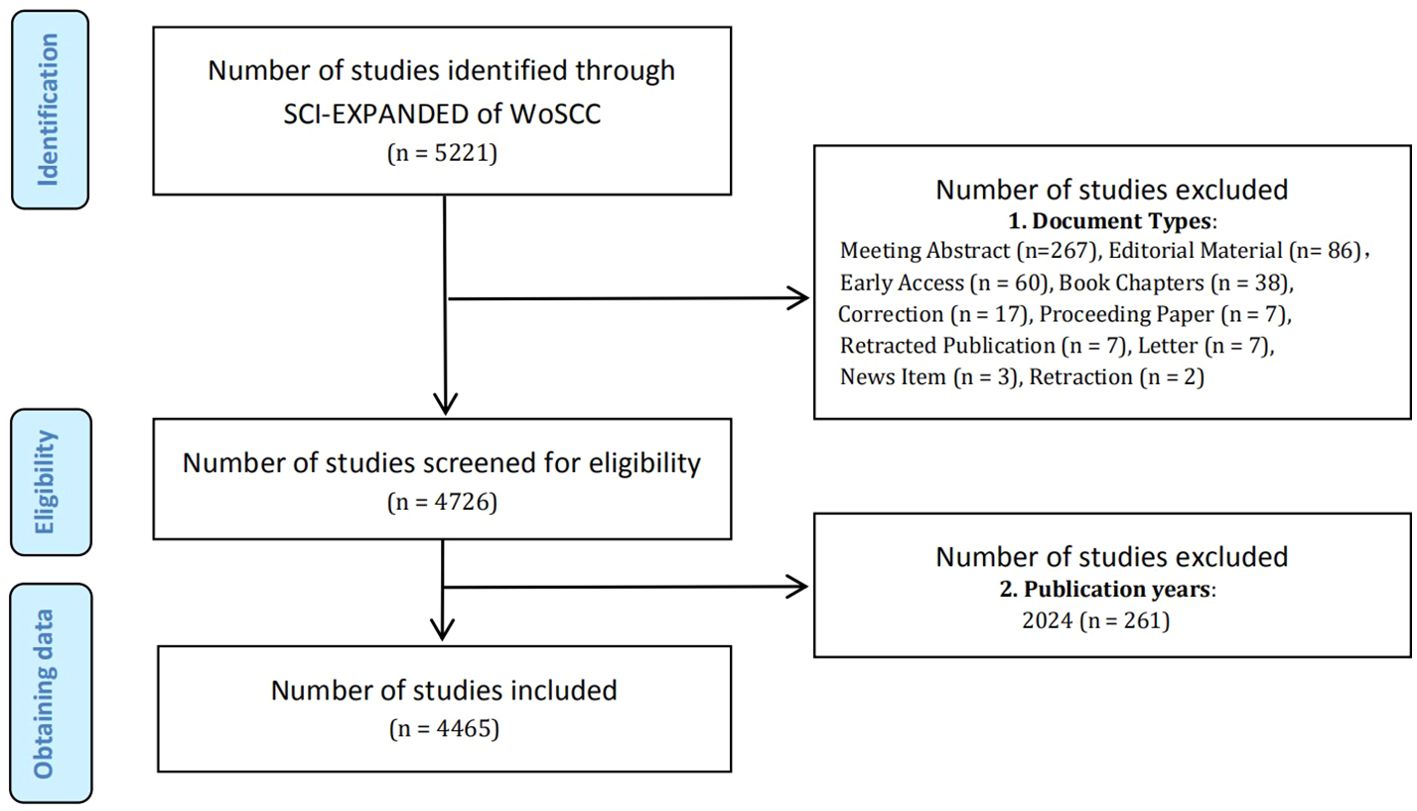
Figure 1. Flow chart of literature screening method in MR/CA.
2.2 Data analysis and software applicationsBibliometric analysis often relies on specialized software tools to process and analyze the vast amounts of data involved. These tools provide functionalities for organizing, visualizing, and measuring the various aspects of scholarly production. Bibliometrix is an R package (version 4.1.3, the R Foundation) designed for performing bibliometric analysis. It offers a set of tools for the quantitative analysis of scientific literature, including citation analysis, co-citation analysis, and social network analysis. VOSviewer (version 1.6.20, Centre for Science and Technology Studies, Leiden University, The Netherlands) was used for creating maps based on bibliometric networks, such as citation, bibliographic coupling, and cooperation relationships. Microsoft Excel 2019 (Microsoft, Washington, USA) was used to extract and complete data processing and analysis. The content of bibliometric analysis encompasses several key areas: Publications analysis: Examining the number of publications (Np), publication types, and publication trends over time. Citation analysis: Assessing citation counts, citation impact, and the institutional distribution of citations. Author productivity: Analyzing the Np produced by the authors, countries, and institutions. Cooperation analysis: Investigating collaboration patterns among countries and identifying research networks. Journal impact analysis: Evaluating the influence and prestige of academic journals through metrics like the Journal Impact Factor (JIF). Citation Network analysis: Analyzes and visualizes citation networks to understand the citatory relationships between different documents. Trend analysis: Identifying emerging topics, research fronts, and paradigm shifts within a field.
3 Results3.1 Annual scientific outputAs shown in Figure 2, we can see that from 2006 to 2023, the annual Np is gradually increasing. In 2006, the Np was only 1, and by 2023, the Np increased to 911. Specifically, from 2006 to 2010, the Np remained relatively low, ranging from 1 to 7 per year. This indicates that the area was still in its early stages of exploration. Starting in 2011, the Np began to increase steadily, reaching 19 in 2011. This suggests that researchers were starting to recognize the potential significance of MR/CA. The growth rate accelerated significantly in the following years, with a sharp increase from 45 publications in 2012 to 84 in 2014. This rapid expansion indicates a growing interest and momentum in the field. From 2015 onwards, the Np continued to rise at a faster pace, reaching over 100 in 2015 and surpassing 200 in 2017. This rapid accumulation of knowledge indicates a maturing field with an increasingly large number of researchers exploring the intersection between MR and CA. In recent years, the growth rate has remained high, with over 600 publications in 2020 and over 900 in 2023. This suggests that the field is still expanding rapidly, attracting increasing researchers to contribute to the understanding of the MR in CA.
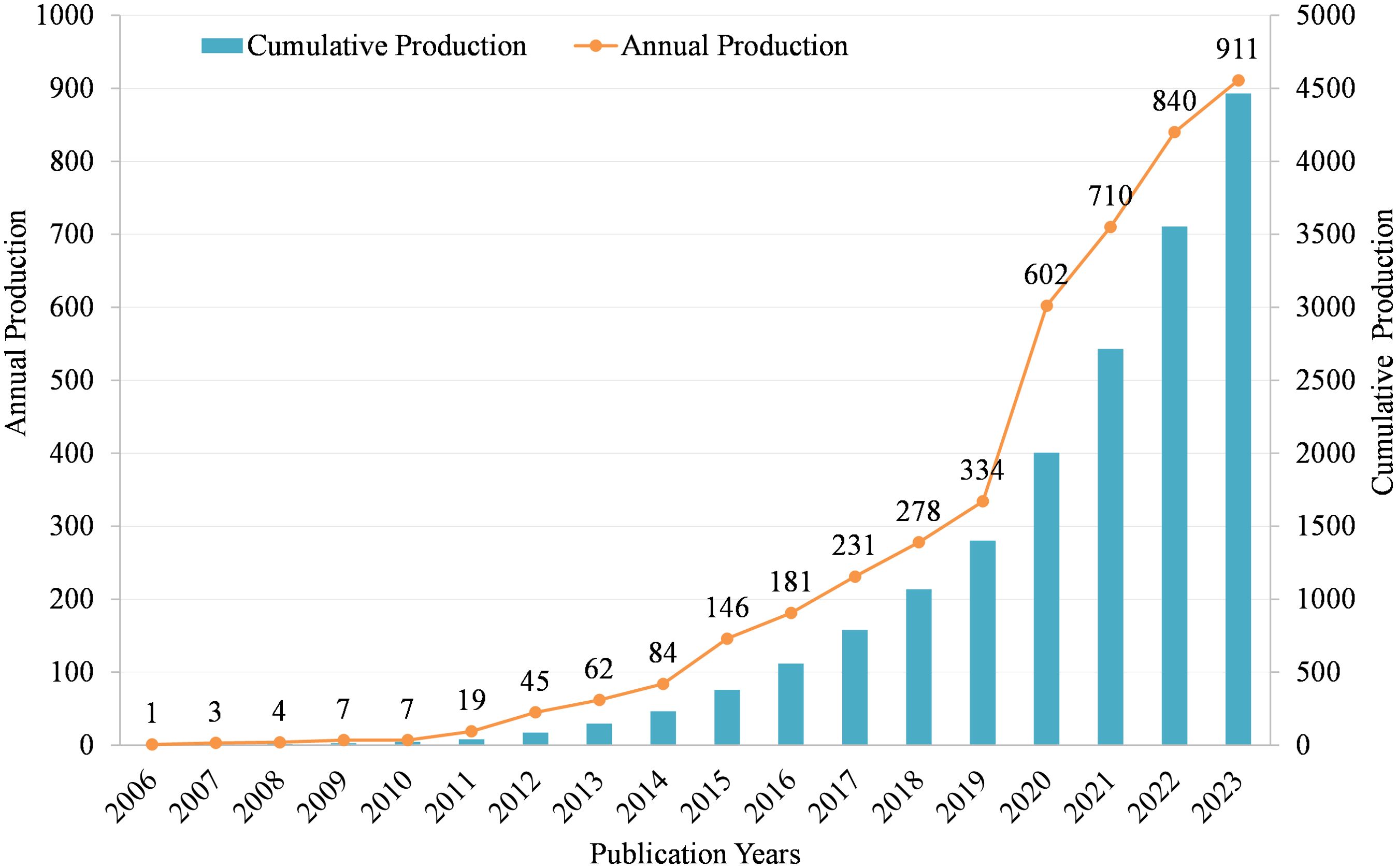
Figure 2. Annual and cumulative scientific output in MR/CA.
3.2 Main journalsTable 1 shows the top ten productive journals. Frontiers in Oncology ranks first with 245 articles and is the journal with the largest number of publications. Cancers followed with 244 published articles, taking second place. International Journal of Molecular Sciences published 160 articles, ranking third. Figure 3A shows the annual Np of the top ten journals. Cancer letters began to publish papers as early as 2009, and Cancers had the most publications in 2023. Figure 3B provides an overview of the combined output from these ten journals. With a total of 1,198 publications, these journals contribute approximately 26.83% of all research output, demonstrating their impressive productivity and influence in the field of MR/CA studies. The total citations (TC) serve as an indicator of the significance of a paper, while the H-index provides a means to assess its academic impact. Table 2 shows the top ten most cited journals, with Cell Metabolism ranked first, followed by Cancer Cell, Frontiers in Oncology, Cell and Cancer Research. In the H-index, Oncotarget took first place, followed by Cancer Research and Frontiers in Oncology.
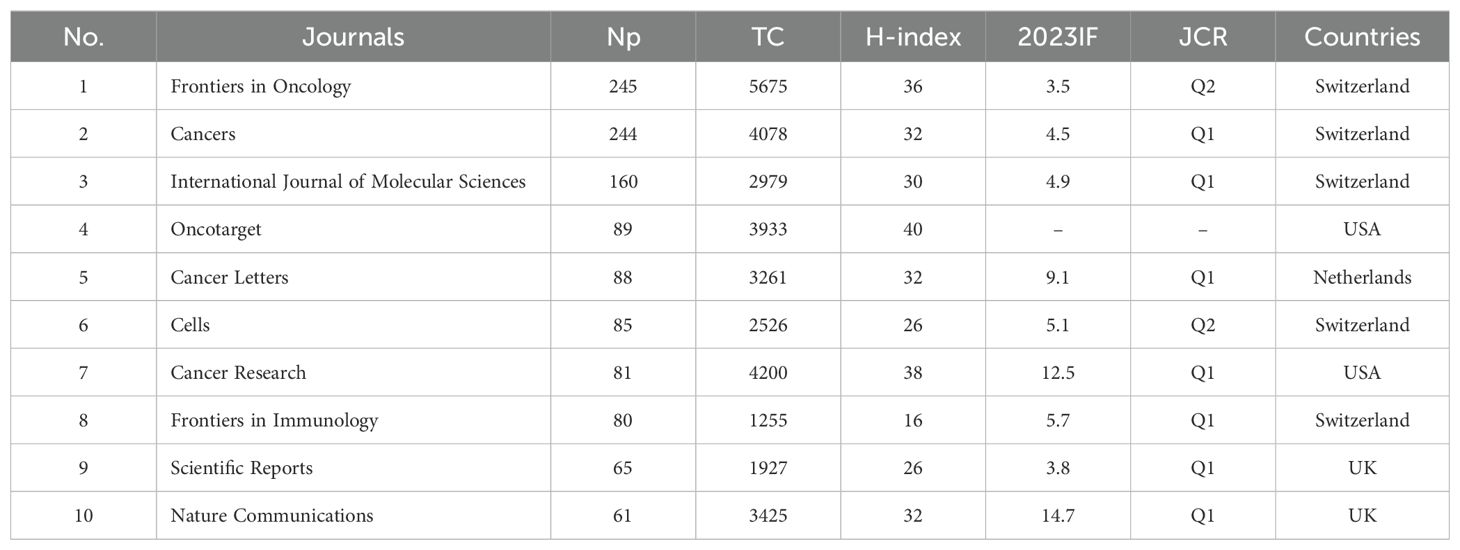
Table 1. The top 10 most productive journals in the field of MR/CA.
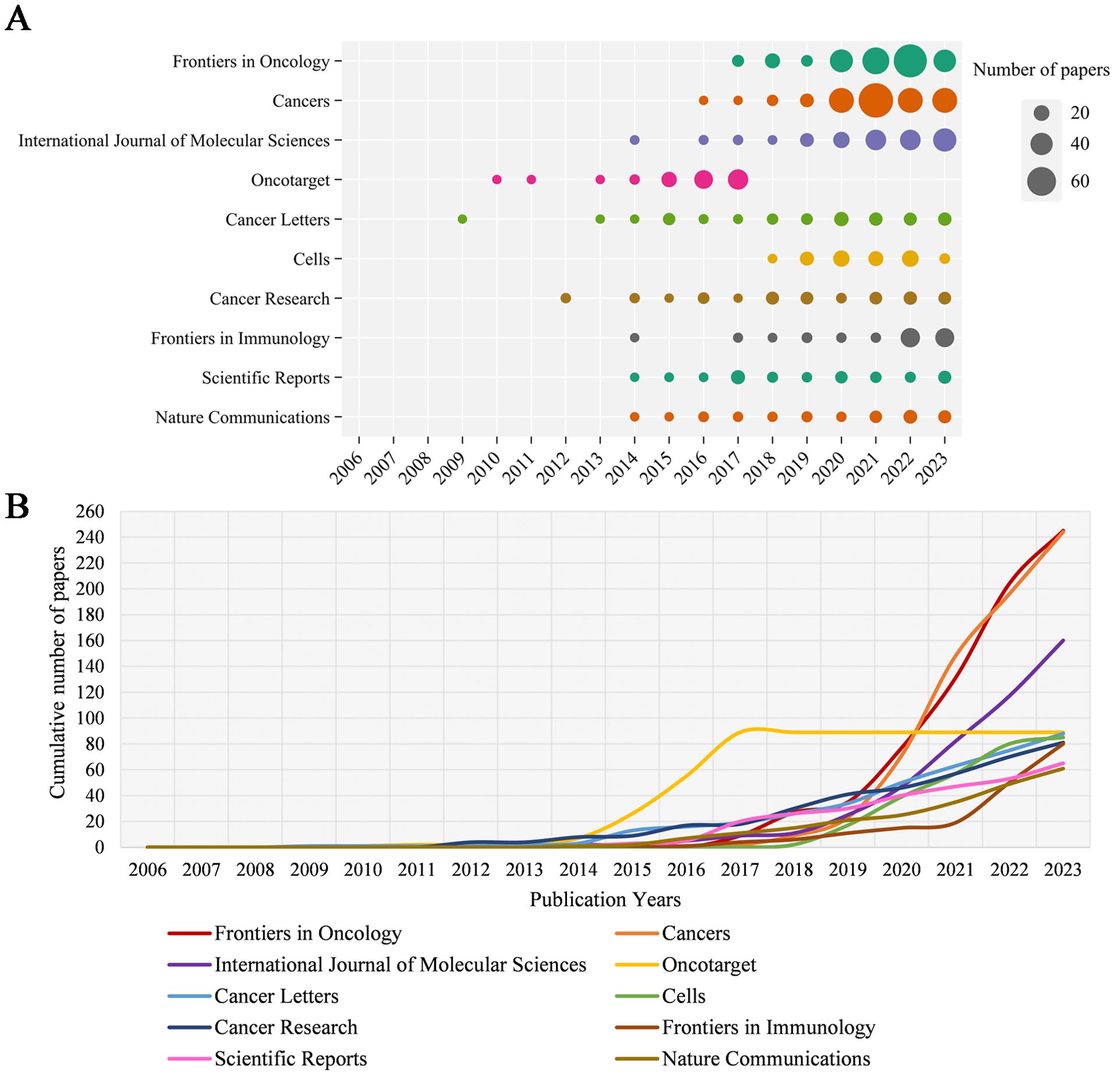
Figure 3. (A) Annual scientific output of the top 10 productive journals in MR/CA (the size of the circles represents the number of publications by each journal, with a larger circle indicating a higher annual output). (B) The cumulative scientific output of the top 10 productive journals in MR/CA. (the cumulative number of publications by the top 10 journals is represented by an upward-trending curve. The slope of the curve reflects the rate of accumulation, with steeper slopes indicating faster growth).
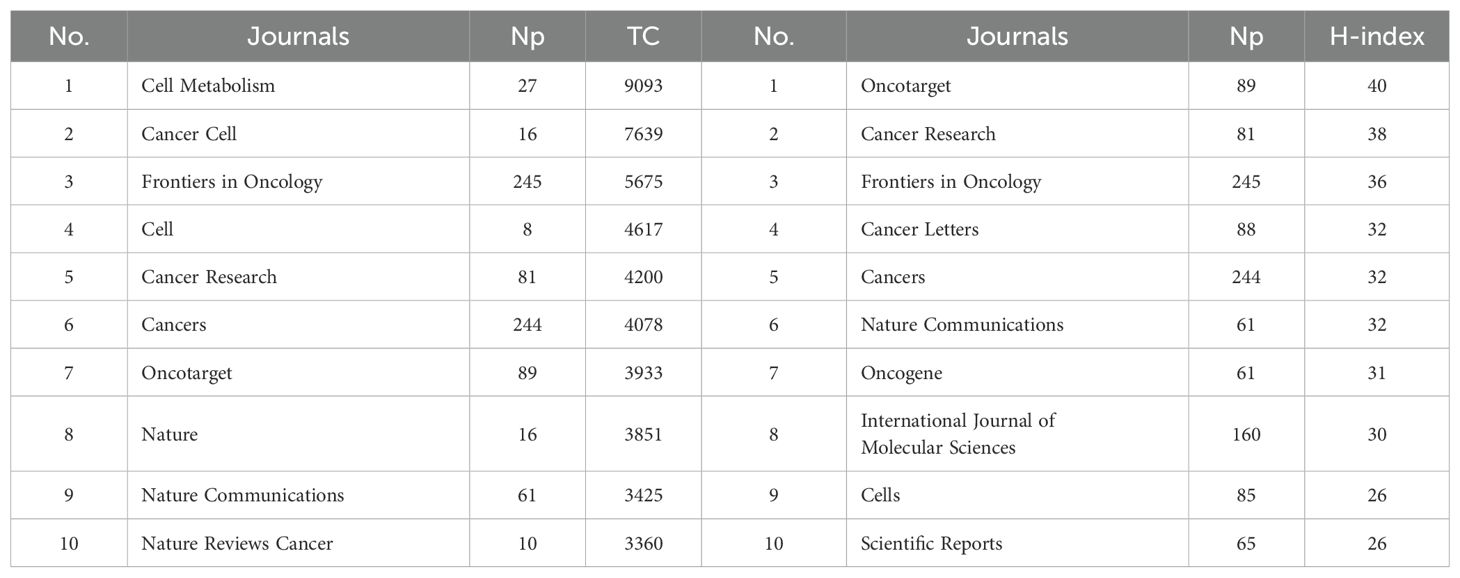
Table 2. The top 10 local impact journals in MR/CA.
3.3 Major countries/regions and institutionsTable 3 shows the 10 most productive countries in MR/CA research. As we can see, China topped the list with 1,949 publications, followed by the United States with 1,234 publications (the TC and H-index were the highest), followed by Italy, Germany, Spain, the UK, and France from Europe. This shows that China and the United States occupied a leading position in MR/CA research, while some countries in Europe also show strong growth momentum. Figures 4A, B illustrate the scientific output of various countries and the primary national collaboration network within the field. Notably, the United States emerged as a leading force in international cooperation, maintaining a particularly close partnership with China. Figure 4C depicts the annual Np of the top ten countries. We can see that the United States issued the earliest and China developed the fastest. Figure 4D illustrates the main financial agencies. The National Natural Science Foundation of China (NSFC) toped the list with 1,164 projects. The U.S. Department of Health and Human Services (HHS) and the National Institutes of Health (NIH) ranked second and third, respectively, showing the support and investment of China and the U.S. in MR/CA research.
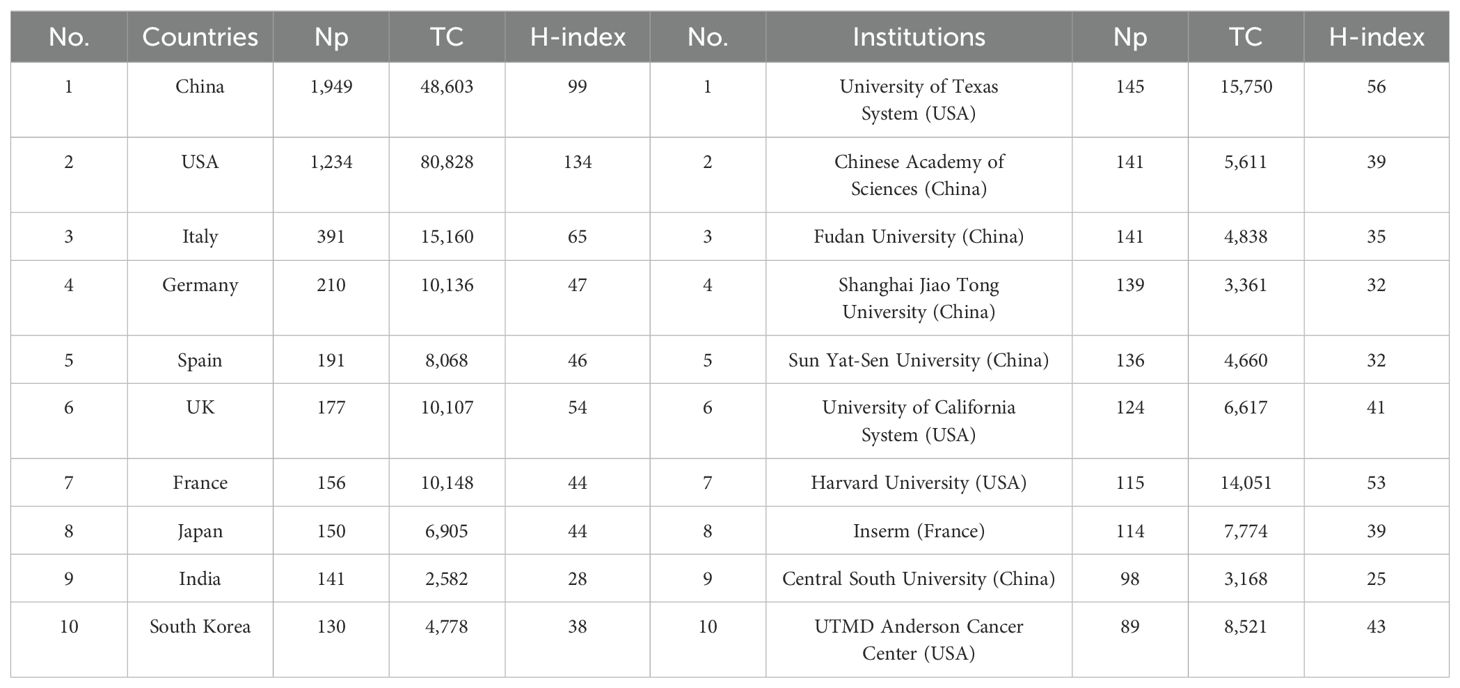
Table 3. The top 10 productive countries and institutions in MR/CA.
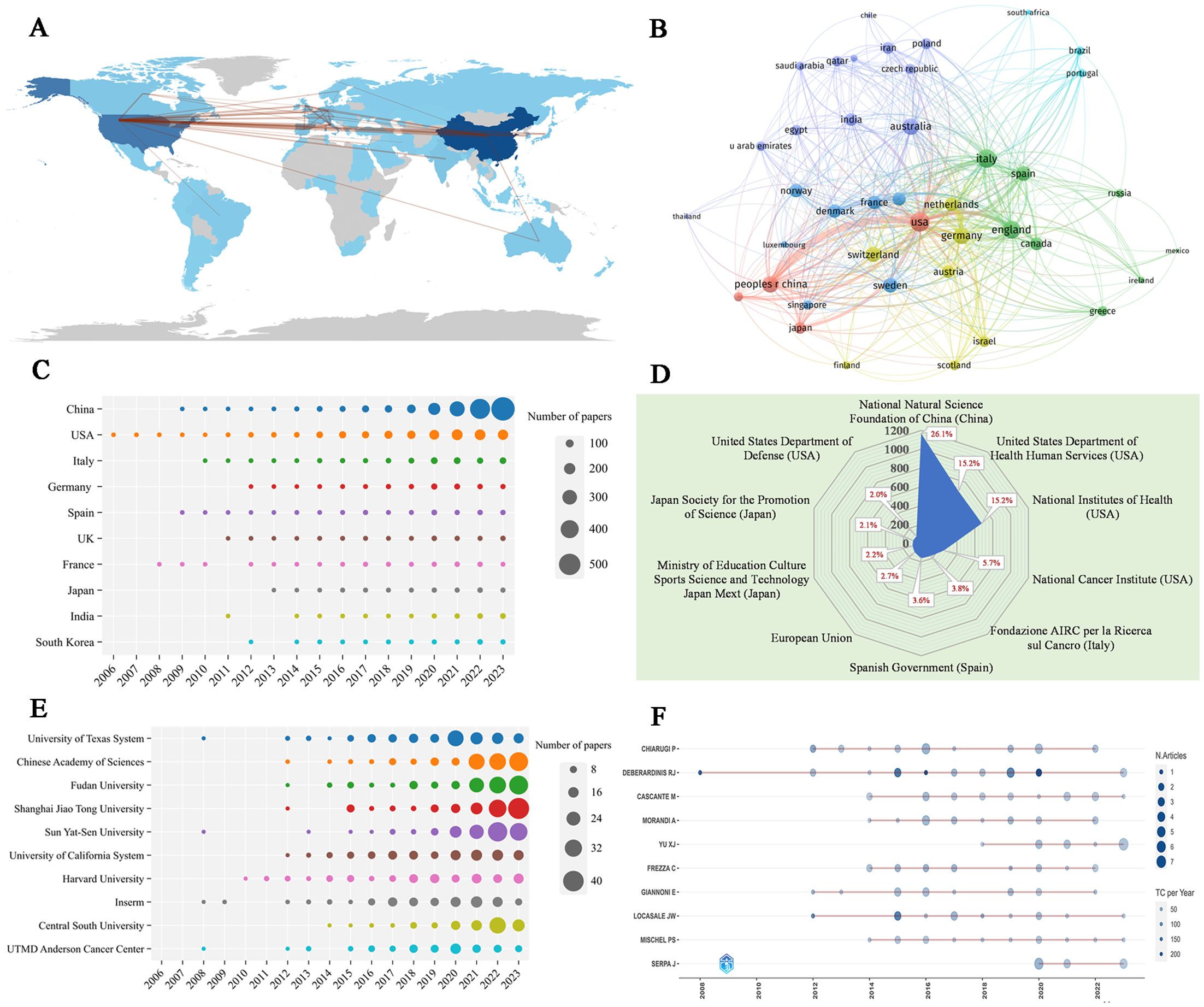
Figure 4. (A) Country scientific production and international collaboration network (min edges set to 10) in MR/CA. (B) Co-authorship network of the top productive countries in MR/CA (each node represents a country; each line represents a coordination relation and its thickness represents cooperation intensity). (C) Annual output of the top 10 productive countries over time in MR/CA. (D) The top 10 funding agencies and source countries in MR/CA research. (E) Annual output of the top 10 institutions over time in MR/CA. (F) Annual output of the top 10 productive authors over time in MR/CA (sizes of the circle signify scientific output, and the larger the circle, the more scientific output; the color depth of the circle indicates the annual citations, and the darker the color, the more citations).
The top 10 most productive institutions in MR/CA are also displayed in Table 3. The institution with the largest Np was the University of Texas System, with 145 articles, followed by the Chinese Academy of Sciences and Fudan University, with 141 articles published respectively. Shanghai Jiao Tong University and Sun Yat-Sen University ranked fourth and fifth with 139 and 136 articles respectively. The University of Texas System and Harvard University ranked in the top two regarding TC and H-index. Figure 4E shows the annual Np of the top 10 institutions. As we can see, the MR/CA study was carried out earlier in 2008 by the University of Texas System, Inserm, UTMD Anderson Cancer Center, and Sun Yat-Sen University. Shanghai Jiao Tong University became the institution with the highest Np in 2023.
3.4 Main authorsTable 4 shows the 10 most productive authors in MR/CA. They are mainly from the United States (n = 3), Italy (n = 3), China (n = 1), Germany (n = 1), Spain (n = 1) and Portugal (n = 1). The top five authors in terms of Np were Debsergatinis Ralph J, Chiarugi Paola, Cascante MARTA, Morandi, Andrea, and Yu Xianjun. Debsergatinis Ralph J, with 21 papers, a total citation of 8,668, and an H-index of 18, is affiliated with the University of Texas. Chiarugi Paola from the University of Florence had published 21 papers with 1,912 total citations and an H-index of 18. The third was Cascante MARTA with 19 papers, a total citation of 435, and an H-index of 11. Although Locasale Jason W published 14 articles, the number of citations ranked second, indicating the significant impact of his articles. Figure 4F shows the annual production of the top 10 authors. We found that Debsergatinis Ralph J began to study the earliest, while Yu Xianjun’s publication volume increased rapidly and he became the author with the highest Np in 2023.
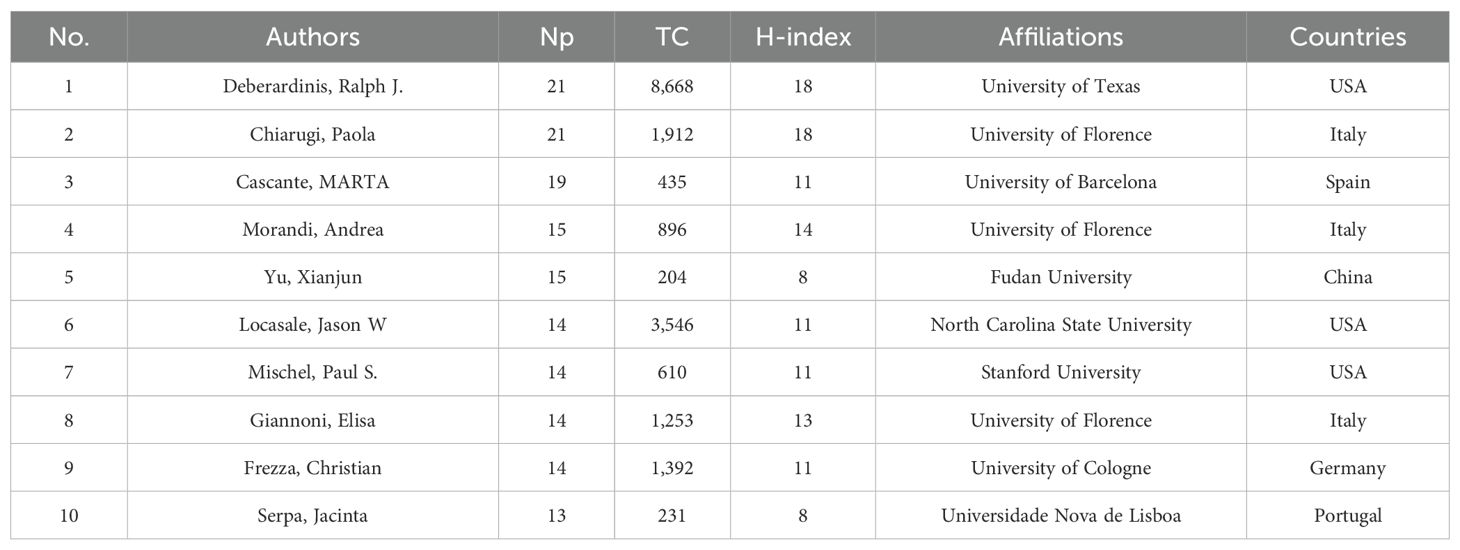
Table 4. The top 10 productive authors in MR/CA.
3.5 Analysis of cited papers in MR/CA research3.5.1 Top 20 most cited articles in MR/CA researchHighly cited papers are those that have been referenced frequently by other publications, which are pivotal contributions within the academic literature that have significantly influenced the landscape of a particular field. Table 5 presents the top 20 highly cited original studies in MR/CA, mostly from Cancer Cell (n = 5), Nature (n = 3), Cell (n = 3), Science (n = 1), and their sub-journals. Browsing the relevant papers in MR/CA, we found that the reprogramming of tumor metabolism (mainly including glucose metabolism, fat metabolism, and amino acid metabolism) includes the MR of tumor cells and the MR of TME (including tumor-associated lymphocytes, fibroblasts, macrophages, natural killer cells).
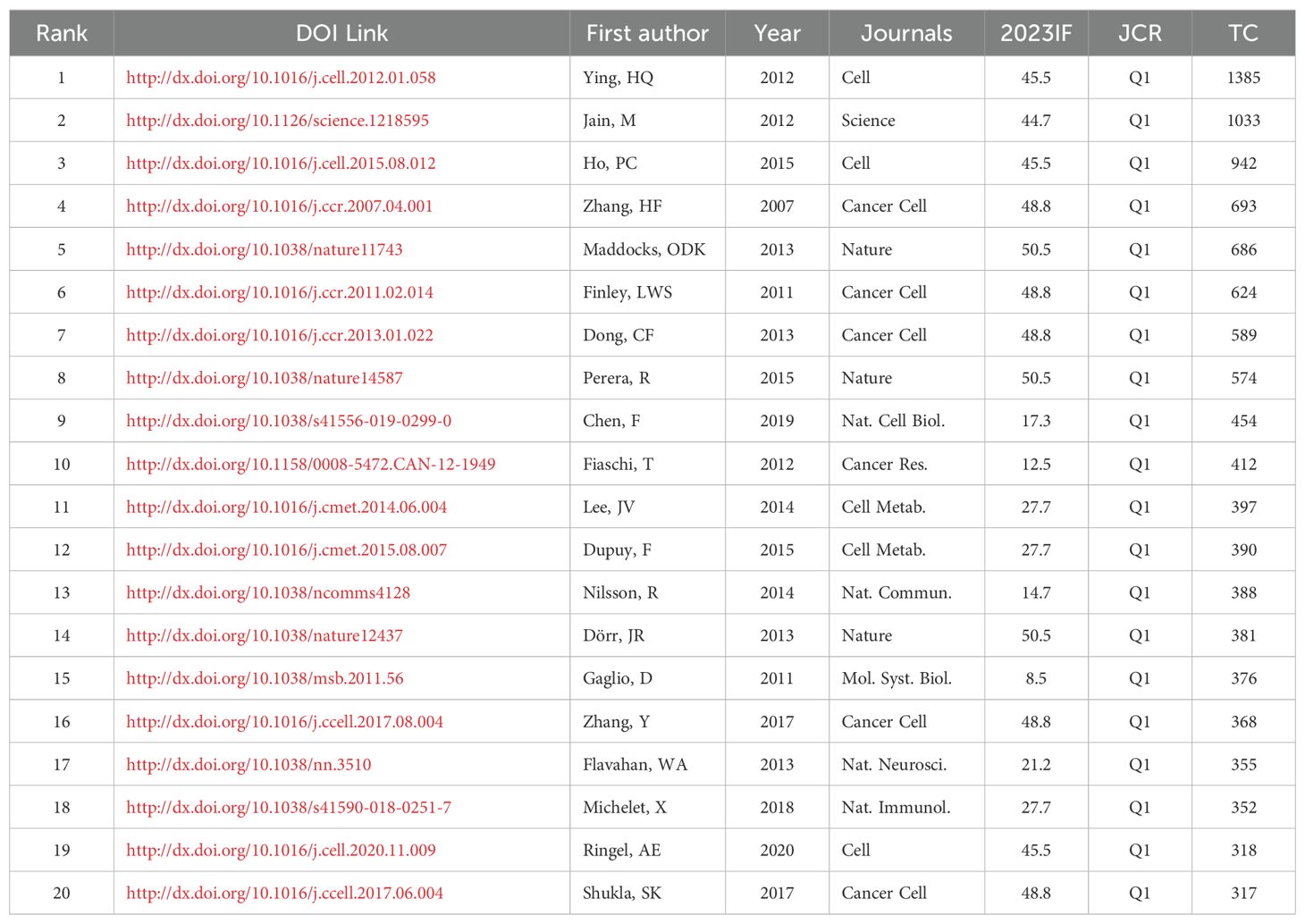
Table 5. The top 20 most cited original research in MR/CA.
MR of tumor cells: The acquisition and utilization of nutrients are essential for tumor growth. For example, brain tumor-initiating cells (BTIC) can adapt to nutritional limitations by preferentially absorbing glucose. Specifically, BTIC shows a high level of Glucose Transporter 3 (GLUT3), which allows glucose to be preferentially absorbed, indicating that BTIC has a competitive advantage in relatively harsh microenvironments (9). Moreover, a 2012 study in Science conducted a large-scale cancer metabolic analysis and found cancer cells have a special preference for glycine, and the expression of glycine consumption and mitochondrial glycine biosynthesis pathway is closely related to the proliferation rate of cancer cells (10). A 2013 study in Nature showed that cancer cells rapidly use exogenous serine and serine deprivation triggers the activation of the serine synthesis pathway and rapidly inhibits aerobic glycolysis, leading to an increase in the flux of the tricarboxylic acid cycle (11).
MR of tumor microenvironment: A 2012 study (12) in Cell showed that there may be metabolic competition between T cells and tumor cells, CD4+ T cells within the tumor showed signs of glucose deficiency and diminished anti-tumor effector function. MR of T cells to increase phosphoenolpyruvate (PEP) production may enhance T cell-mediated antitumor immune responses. A 2020 study (13) found that tumors and CD8+ T cells showed different metabolic adaptations to obesity, tumor cells increase fat uptake under a high-fat diet (HFD), while tumor-infiltrating CD8+ T cells do not; These different adaptations lead to changes in fatty acid distribution in HFD tumors, thereby affecting CD8+ T cell infiltration and function; Blocking MR of tumor cells in obese mice may improve antitumor immunity. In addition, a paper found that enhancing the fatty acid metabolism of CD8+ T cells in a metabolically challenging tumor microenvironment can improve the efficacy of immunotherapy (14). A 2018 study published in Nature showed that the MR of natural killer (NK) cells in obesity limits anti-tumor responses and is the first to discover the molecular mechanism by which NK cells are blocked by excessive fat in obese individuals. It is pointed out that this ‘blockage’ does not prevent NK cells from recognizing tumor cells, but prevents them from killing tumor cells (15). A study (16) described the significance of glycolysis of cancer-associated fibroblasts (CAFs) on tumor growth and the phenomenon of lactic acid shuttle between CAFs and tumor cells. Lactic acid released by glycolytic tumor cells can up-regulate hypoxia-inducible factor-1 alpha (HIF-1α)-stabilizing long noncoding RNA (HISLA) in tumor-associated macrophages (TAMs), forming a feedforward loop between TAM and tumor cells. Blocking HISLA can inhibit glycolysis and chemotherapy resistance of breast cancer in vivo (17).
Some studies have explored the molecular mechanisms of MR. The KRAS gene is the most common carcinogenic gene. Oncogenic KRAS may maintain pancreatic cancer by regulating anabolic glucose metabolism (18). Glutamine may support the growth of pancreatic cancer through oncogenic KRAS-regulated metabolic pathways (19). The expression of oncogenic KRAS or AKT stimulates changes in histone acetylation, which precedes tumor development. The effect of AKT on histone acetylation is mediated by the metabolic enzyme ATP-citrate lyase, and the level of pAKT is significantly correlated with histone acetylation markers, indicating that acetyl-CoA metabolism is a key determinant of histone acetylation levels in cancer cells (20). In addition, the tumor suppressor p53 can promote cell survival during metabolic stress and transient activation of p53-p21 and cell cycle arrest promotes cell survival by effectively guiding the depleted serine stores to glutathione synthesis, thereby maintaining the cell’s antioxidant capacity (11). Transcription factor snails can cause MR, endowing tumor cells with cancer stem cell-like characteristics, and promoting drug resistance, tumor recurrence and metastasis. Snail-mediated inhibition of FBP1 loss provides a metabolic advantage for Basal-Like breast cancer (BBC), and the loss of FBP1 is a critical oncogenic event in epithelial-mesenchymal transition and BBC (21).
Mitochondrial deacetylase SIRT3 can mediate MR by destabilizing HIF-1α, a transcription factor that controls the expression of glycolytic genes. SIRT3 overexpression inhibits glycolysis and proliferation of breast cancer cells, while SIRT3 loss increases reactive oxygen species levels to induce tumorigenesis (22). HIF-1α target pyruvate dehydrogenase kinase 1 (PDK1) is required for liver metastasis, and HIF-1α activity and PDK1 expression are elevated in liver metastasis of breast cancer patients, indicating that PDK1 is a key regulator of breast cancer metabolism and metastasis potential (23). A study in Nature identified the MiT/TFE transcription factors as a major regulator of MR in pancreatic cancer and demonstrated that transcriptional activation of the clearance pathway gathered on lysosomes is a new marker of invasive malignant tumors (24). A study showed that the expression of metabolic enzymes highlights the key role of MTHFD2 and mitochondrial folate pathway in cancer, MTHFD2 is an integral part of mitochondrial one-carbon metabolism, a metabolic system recently associated with the rapid proliferation of cancer cells. RNA interference targeting MTHFD2 can lead to cancer cell death (25).
Targeted MR may become a promising method for anti-tumor therapy. In vivo, the drug targeting caused by therapy-induced senescence promotes tumor regression and further improves the treatment results, revealing the super catabolic properties of therapy-induced senescence, which can be treated by synthetic lethal metabolic targeting (26). A study in 2017 demonstrated that HIF-1α causes an increase in the glycolysis pathway and pyrimidine synthesis, which is the mechanism of gemcitabine resistance in pancreatic cancer, and targeting HIF-1α can increase the effectiveness of gemcitabine (27). Furthermore, glycolysis metabolite PEP may be a metabolic checkpoint for anti-tumor T-cell responses, and PEP carboxykinase 1 (PCK1) overexpressed T cells can limit tumor growth and prolong the survival time of melanoma mice. An acidic pH environment fosters tumor local invasive growth and metastasis, whereas oral administration of sodium bicarbonate effectively raises the peritumoral pH, thereby inhibiting tumor growth and invasion (28).
3.5.2 Top 10 most cited reviews in MR/CA researchHighly cited reviews can provide synthesized overviews of a particular field of research and comprehensive analysis and insight into a topic by summarizing and discussing numerous primary studies. These review articles are highly valued for their ability to guide researchers through complex literature, clarify concepts, and propose new directions for future study. Table 6 presents the list of the top ten most highly cited review articles published between 2008 and 2020.
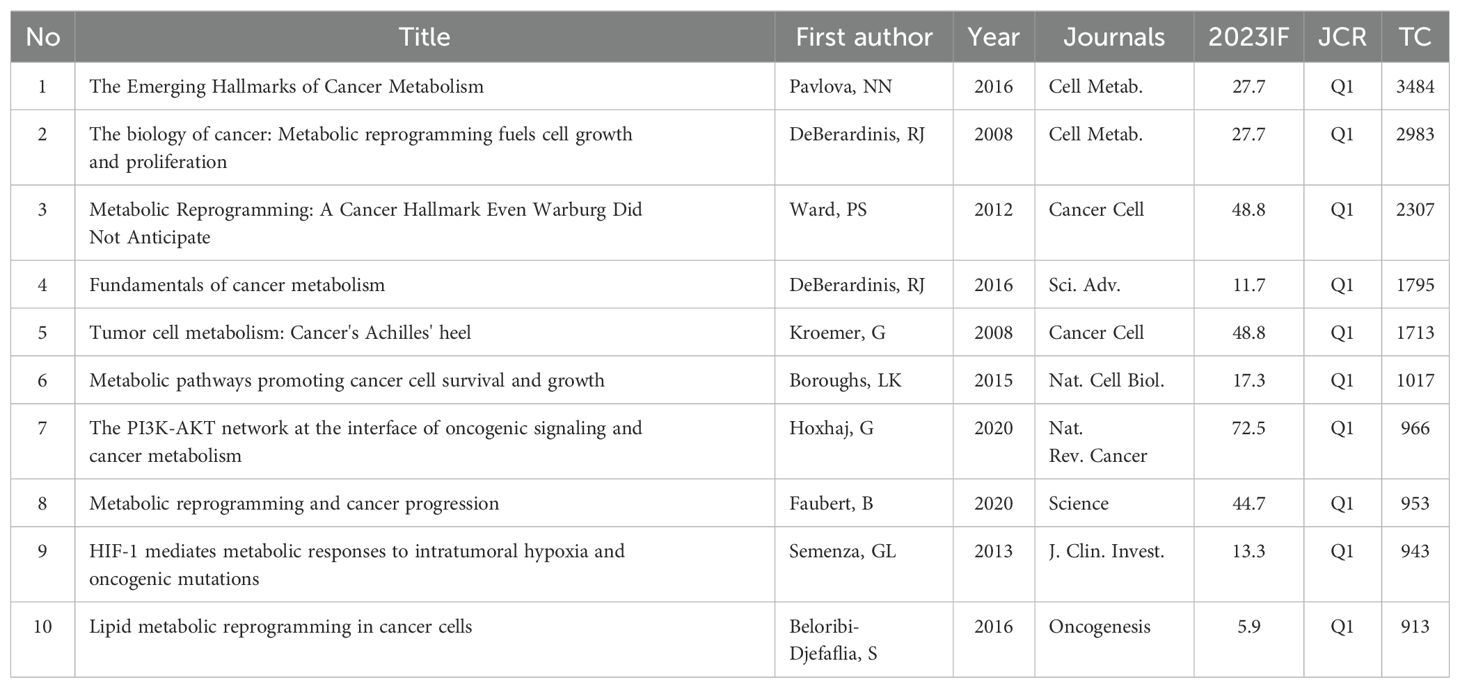
Table 6. The top 10 most cited reviews in MR/CA.
In 2008, a review (29) outlined that several core fluxes of MR/CA, including aerobic glycolysis, de novo lipid biosynthesis, glutamine-dependent supplementation, form a stereotyped platform that supports the proliferation of different cell types, and the regulation of these fluxes by cell mediators of signal transduction and gene expression, including PI3K/Akt/mTOR system, HIF-1 and Myc. The other review (30) discussed changes in signal transduction pathways and enzyme mechanisms that lead to MR of transformed cells and explained that in addition to the core role of HIF-1 activation, oncogenes (PI3K, Akt, Her2) and tumor suppressor genes (p53, VHL, PTEN, LKB1) also determine the MR of cancer cells at multiple levels. Likewise, the altered metabolism was caused by the active reprogramming of altered oncogenes and tumor suppressors, and the metabolic adaptation can be clonally selected during tumorigenesis (31). In addition, oncogenes and tumor suppressor genes play key roles in cellular metabolism, promoting MR and enabling cancer cells to acquire components from multiple metabolic pathways required for energy synthesis (32). HIF-1 mediates the metabolic response to intratumoral hypoxia and carcinogenic mutations, is activated in cancer cells through the loss of tumor suppressor function and the acquisition of oncogene function, and mediates metabolic changes that lead to cancer progression and therapeutic resistance (33).
In 2016, an article (6) provided an overview of six hallmarks of cancer-related MR, including disturbances in glucose and amino acid uptake, opportunistic patterns of nutrient access, biosynthesis and NADPH production using intermediates of the glycolytic/TCA cycle, increased nitrogen requirements, changes in metabolite-controlled gene regulation and interactions between metabolism and the TME. Meanwhile, a review (4) provided a conceptual framework to understand how and why MR occurs in tumor cells and what mechanisms link metabolic changes to tumorigenesis and metastasis. Another review (34) described the reprogramming of lipid metabolism in cancer cells and introduced the important role of specific lipids in mediating intracellular carcinogenic signal transduction, endoplasmic reticulum stress, and bidirectional crosstalk between cells of TME and cancer cells. In 2020, a paper (2) in Science showed that metabolic characteristics and preferences of tumors will change during cancer progression. Primary tumors and metastatic cancers have different metabolic characteristics even in the same patient or experimental model. A review (35) in Nature Reviews Cancer showed that the PI3K-AKT signal transduction network controls cancer cell metabolism by directly and indirectly regulating nutrient transport and metabolic enzymes, thereby linking oncogenic signaling and MR to support the survival and proliferation of cancer cells.
3.5.3 Top 20 most cited references in MR/CA researchFigures 5A, B illustrate the 20 most high-cited references and their respective citation interconnections. We found some important literature related to MR to understand its development process. As we can see, in 1927, German biochemist Warburg measured the changes of blood glucose in the inflow arteries and outflow veins of normal tissues and tumor tissues in animals and found that even in an environment with sufficient oxygen supply, tumor tissues were more inclined to obtain energy through glycolysis (36). In 1956, Warburg attributed this phenomenon to the mitochondrial dysfunction of cancer cells and proposed that the development of cancer cells is divided into two stages: the first stage is irreversible respiratory damage caused by many carcinogens and the second stage of cancer development is the result of the long-term struggle of injured cells to maintain their structure (37). In 2007, DeBerardinis et al. (38) found that in addition to aerobic glycolysis, transformed cells can participate in glutamine metabolism that exceeds protein and nucleotide synthesis requirements. In 2008, Wise et al. (39) found that Myc regulates the transcriptional program that stimulates mitochondrial glutamine decomposition and leads to glutamine addiction. In 2009, taking advantage of the high glucose uptake of tumors, Vander (40) developed a method (FDG-PET) for tumor diagnosis and therapeutic effect assessment and found that nutritional supplementation and strict glucose control were helpful in the treatment of tumors. Gao et al. (41) found that c-Myc inhibits miR-23a/b to enhance mitochondrial glutamine enzyme expression and glutamine metabolism. In 2011, Hanahan D and Weinberg RA (42) officially defined reprogramming of energy metabolism as one of the ten most important cancer criteria and a newly recognized hallmark of cancer. Cairns RA (43) summarized that the Warburg effect is regulated by PI3K, HIF, p53, MYC, and AMP-activated protein kinase (AMPK)-liver kinase B1 (LKB1) pathways. Koppenol et al. (44) reviewed Otto Warburg’s contributions to current concepts of cancer metabolism in detail. In 2013, Son et al. (19) showed that glutamine supported the growth of pancreatic cancer through the metabolic pathway regulated by KRAS. In 2015, Chang et al. (45) found that metabolic competition in the tumor microenvironment is a driver of cancer progression. In 2016, Liberti MV et al. (46) discussed in detail the historical perspective of the Warburg effect and several mechanisms of how the Warburg effect benefits cancer cells. Altman et al. (47) summarized the role of glutamine in cell growth and cancer cell biology. In 2017, Vander Heiden et al. (48) summarized the importance of cancer metabolism to cancer pathophysiology and clinical oncology. Changes in cell metabolism can promote transformation and tumor progression, and metabolic phenotypes can also be used to image tumors, provide prognostic information, and treat cancer.

Figure 5. (A) The top 20 most cited references in MR/CA research. (B) Co-citation network of the top 20 most cited references in MR/CA research (The size of the circle represents the number of references).
3.6 Analysis of keywords in MR/CA researchKeyword analysis has important application value in bibliometric research. It can help researchers understand the content, structure, and characteristics of the literature more deeply, reveal the research topics and hotspots of the literature, evaluate the quality and value of the literature, and predict future research directions and hotspots.
3.6.1 Most frequent wordsA total of 13,978 keywords were used in this study, comprising 6,545 author keywords and 7,433 additional keywords that were found in publications. The following author keywords (Figures 6A) were highly frequent: “metabolic reprogramming”, “metabolism”, “cancer”, “tumor microenvironment”, “breast cancer”, “hepatocellular carcinoma”, “colorectal cancer”, “glycolysis”, “aerobic glycolysis”, “cancer metabolism”, “mitochondria”, “Warburg effect”, “metabolomics”, “lipid metabolism”, “glucose metabolism”, “glutamine metabolism”, “metformin”, “hypoxia”, “epigenetics”, “immunotherapy”, “chemoresistance”, “drug resistance”, “cancer therapy”, “biomarker”, “prognosis” and “metastasis”. However, “expression”, “cancer”, “growth”, “metabolism”, “cells”, “activation”, “inhibition”, “breast-cancer”, “resistance”, “metastasis”, “pyruvate-kinase m2”, “mechanisms”, “oxidative stress”, “glutamine-metabolism”, “glucose-metabolism”, and “survival” were prominently keywords plus (Figures 6C).
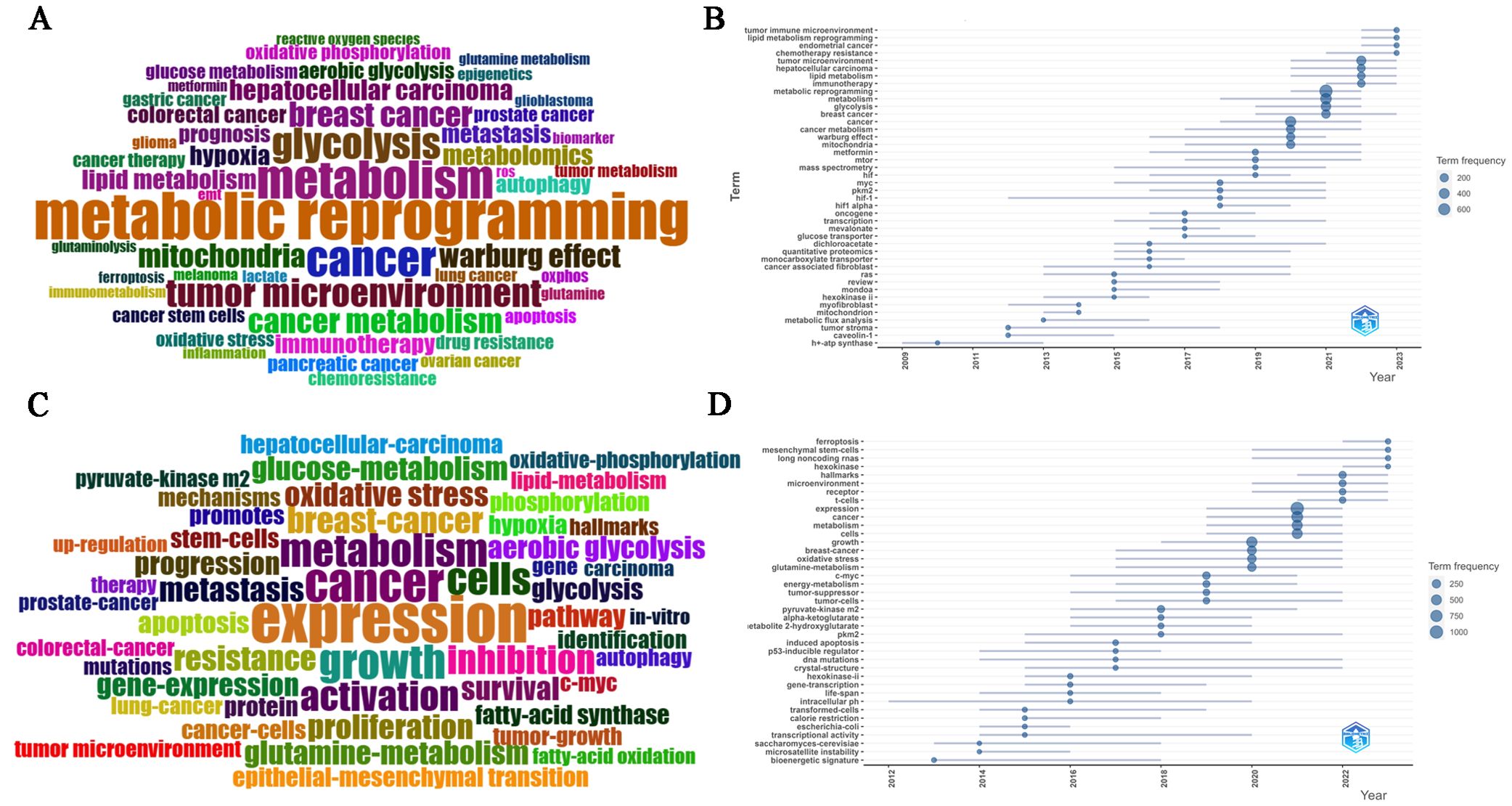
Figure 6. (A) Common author keywords in MR/CA research. (B) Evolution trends of common author keywords over time in MR/CA (The size of the circle represents the number of occurrences). (C) Common keywords plus in MR/CA. (D) Evolution trends of common keywords plus over time in MR/CA (The size of the circle represents the number of occurrences).
3.6.2 Trend analysis of keywordsAt the same time, according to the keyword analysis, future research directions and hotspots can be predicted to support scientific research decision-making. As shown in Figures 6B, D, the main author keywords included “tumor immune microenvironment”, “lipid metabolism reprogramming”, “circular RNA”, “exosome”, “prognostic model”, “immunotherapy”, “lipid metabolism”, “glycolysis”, “tumor microenvironment”, “Warburg effect”, “metformin”, “mitochondria”, “myc”, “pkm2”, “hif-1” and “hif”. The main keywords plus included “c-myc”, “pkm2”, “long noncoding RNAs”, “ferroptosis”, “receptor”, “microenvironment”, “hallmarks”, “metabolism”, “cancer”, “oxidative stress”, “glutamine-metabolism”, and “tumor-suppressor”.
3.6.3 Cluster analysis of keywordsFigure 7 shows different colors representing the results of different cluster analyses in the network diagram. These clustering results are usually grouped based on the similarity of the relationship between small dots. The following is a description of the clustering results of different colors:
(1) Red clustering: this mainly represents processes closely related to the mechanisms of energy metabolism, including “genes”, “proteins”, “expression”, “overexpression”, “metabolomics”, “mechanisms”, “p53”, “Kras”, “pten”, “myc”, “akt”, “Ras”, “EGFR”, “oncogenic Kras”, “proliferation” and “mutations”. These genes and proteins are related to tumor growth, invasion and immune escape and are important for cellular energy metabolism.
(2) Dark blue clustering: this is related to “cancer metabolism” such as “glutamine metabolism”, “amino acid metabolism”, “serine metabolism”, and “one-carbon metabolism”. It also includes “isocitrate dehydrogenase 1”, “tumorigenesis”, “idh2 mutations”, “alpha-ketoglutarate”, “2-hydroxyglutarate”, “oncometabolite 2-hydroxyglutar”, “TCA cycle”, “reductive carboxylation”, and “transporters”, which are associated with the biological process of mitochondrial metabolism. Glutamate is primarily formed from alpha-ketoglutarate, an intermediate in the TCA cycle.
(3) Green clustering: this focuses on “lipid metabolism reprogramming”, including keywords such as “energy-metabolism”, “fatty-acid synthase”, “fatty-acid oxidation”, “lipid metabolism”, “lipid droplets” and “cholesterol-metabolism”. Meanwhile, it also pays attention to “cancer stem cell”, “EMT”, “endoplasmic-reticulum stress”, “glut1”, “therapy resistance”, “chemoresistance”, “chemotherapy resistance”, “cisplatin resistance”, “gemcitabine resistance”, “multidrug resistance” and “drug resistance”. This may indicate that metabolic reprogramming affects anti-tumor therapy.
(4) Light blue clustering: this focuses on specific metabolic pathways in MR and tumor progression. This cluster may contain “glucose metabolism”, “glycolysis”, “Warburg effect”, “long non-coding RNA”, “lncRNA”, “circular RNA”, “microRNA”, “microRNAs”, “pyruvate-kinase m2”, “pkm2”, “HIF-1”, “sirtuins”, “c-Myc”, “signaling pathway” and “hypoxia”. In addition, some keywords focus on mitochondrial-related research, such as “mitochondria”, “oxidative stress”, “autophagy”, “reactive oxygen species”, “ROS”, “apoptosis”, “mitochondrial dysfunction”, “mitophagy”, “nrf2”, “nf-kappa-b”, “DNA-damage” and “oxidative phosphorylation”.
(5) Yellow clustering: this mainly focuses on the TME and tumor immune microenvironment, and keywords such as “immune metabolism” and “tumor microenvironment” appear as nodes and are linked to words such as “immunosuppression”, “immune evasion”, “immunotherapy”, “PD-L1”, “tumor-associated macrophages”, “macrophage polarization”, “regulating t-cells”, “t-cells”, “suppressor-cells”, “t-cell metabolism”, “immune cells”, “CD8(+) t-cells”, and “gut microbiota”.
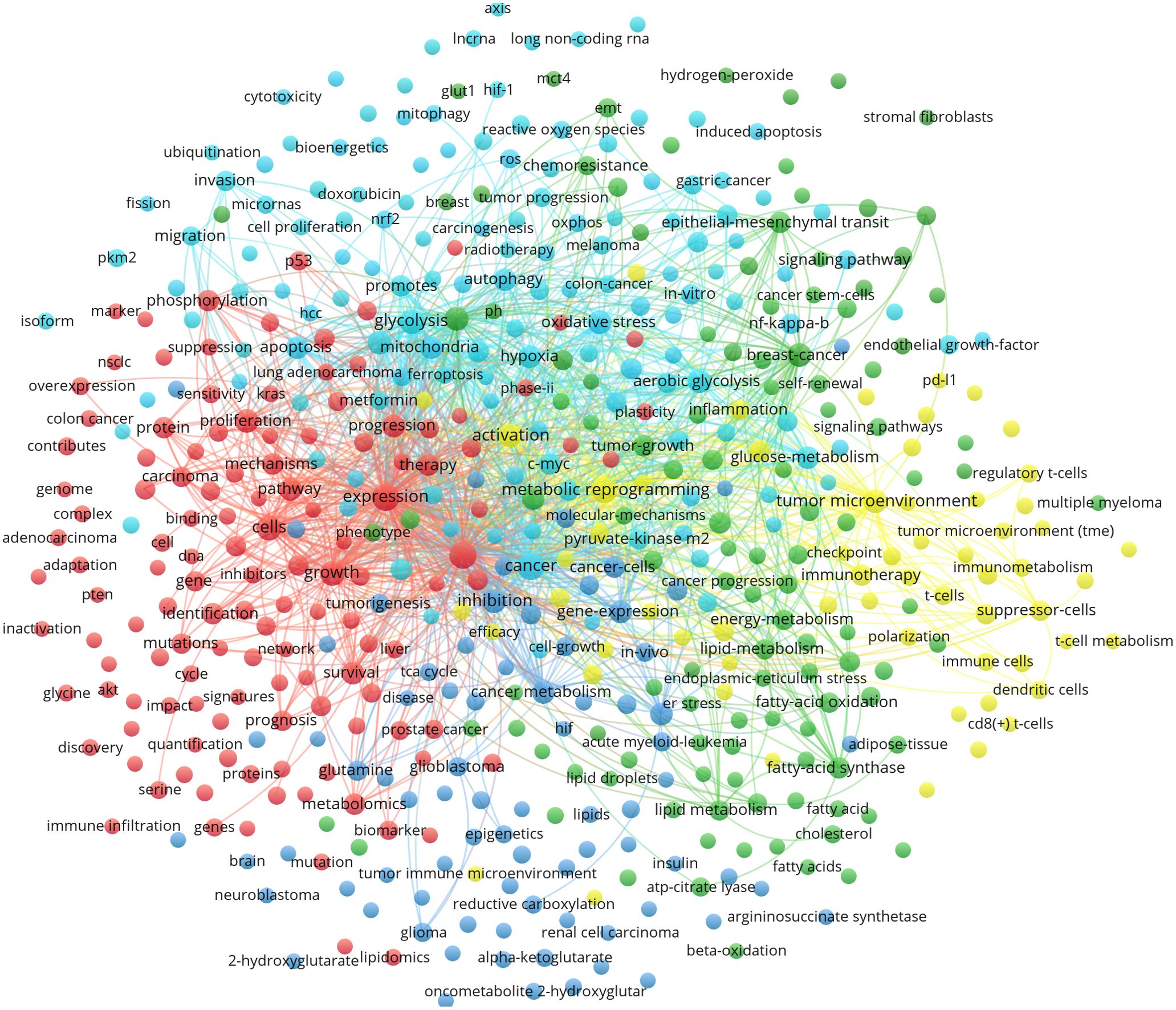
Figure 7. Cluster analysis of common keywords in MR/CA research (Nodes are represented by different colors, and edges show the relationship between them by connecting them, the size of the nodes represents the frequency of occurrence, different colors represent the results of different cluster analysis in the network diagram).
4 DiscussionIn the process of abnormal proliferation, to obtain more energy to support autologous proliferation, invasion, and metastasis, cancer cells usually need to change their metabolic mode or increase their metabolic amount. Over the last two decades, with the escalating understanding of MR, there has been a growing body of research indicating that MR can influence the initiation and progression of cancer as well as modify the outcomes of tumor therapy. Consequently, studies exploring the interrelationship between MR and CA have gained momentum, leading to numerous significant research advancements. As a result, this study conducted a bibliometric analysis to furnish researchers with a fundamental understanding of the status and evolving trends in the cross-disciplinary intersection between MR and CA.
4.1 Analysis of document issuance in MR/CAOverall, the Np shows a stable growth trend. This suggests that there may be an increase in research interest, activity, or publishing capacity in this field. This growth may be due to the expansion of the research field, the increase of scientific research funds, the increase in the number of researchers, the improvement of publishing channels, or other related factors. We try to divide this duration into the following periods: The initial period (2006-2010): The Np is relatively small but shows an increasing trend. Steady growth phase (2011-2018): The Np continued to grow steadily. Accelerated growth phase (2019-2020): Growth is more pronounced, possibly due to some breakthroughs in research areas. Stable high growth period (2021-2023): The Np reached a higher level and appeared to be stable.
The Np can be used as an indicator to measure the activity of journals in this field, but it does not directly reflect the quality or influence of journals. In general, indicators such as impact factor (IF) and H index (H-index) are more commonly used to evaluate the academic influence of journals. Our study showed that the Frontiers in Oncology, Cancers and International Journal of Molecular Sciences ranked among the top three in the Np, the Oncotarget had the highest H-index, and Cell Metabolism had the highest TC. The top 20 highly cited articles were mainly published in Nature, Cell, Science, and Cancer Cell. The impact factors of these articles are all above 10, and all of them are JCR zone 1.
Primarily originating from China and the United States, these publications are also contributed by Italy, Germany, and Spain. However, it is noteworthy that China still has room for improvement in MR/CA-related research and could benefit from strengthening international collaborations. Among the top ten institutions, those from China, the United States, and France demonstrate their strong research productivity in this field. University of Texas System (the highest TC), University of California System, and Harvard University (the secondary high TC) from the United States produced many papers. In China, the Chinese Academy of Sciences, Fudan University, and Shanghai Jiao Tong University published the most articles and made important contributions to MR/CA research.
The top ten authors were mostly from world-class research universities. The author with most Np, the highest TC and the H-index was Deberardinis RJ from the University of Texas, who had made great contributions to the study of MR/CA and published a large number of highly cited papers (4, 29, 32) and high-IF papers in Nature (49, 50), Science (2), Nature Medicine (51), and Nature Reviews Cancer (52), especially paid attention to the effect of MR on tumorigenesis and progression of CA, oncogenes and tumor suppressors and metabolic pathways in MR. In the last few years, he has increasingly focused on targeting tumor metabolism to improve anti-tumor efficacy (53). Chiarugi P from the University of Florence has long been interested in the role of cancer-associated fibroblasts (CAFs) in MR (16, 54, 55) and microRNA regulator of MR (56, 57), and his articles are mainly published in Cancer Research and the Oncotarget. Locasale JW from North Carolina State University had the second-highest TC and published many highly cited and high-IF papers in Cell (12, 18), focused on the role of gene regulation (18), epigenetics (7, 58, 59), and extracellular vesicles (60) in MR/CA.
4.2 Hotspots and Frontiers in MR/CA researchThrough a cluster analysis of commonly used keywords and highly cited articles, hotspots and boundaries in MR/CA research have been delineated. This study found that the current hot topics of MR/CA focus on five perspectives: (1) the effect of MR on tumorigenesis and progression of CA; (2) MR in tumor cells and tumor microenvironment; (3) The effect of MR on the treatment of CA; (4) the underlying mechanisms of MR; (4) Modulating MR for the prevention and treatment of CA. In addition, new research priorities such as tumor microenvironment, reprogramming of lipid metabolism, circular RNA, long non-coding RNA, exosome, prognosis model, and immunotherapy are not only the current hotspots but also are anticipated to remain the focus of MR/CA research for the next few years.
4.2.1 The effect of MR on tumorigenesis and progressionSome studies have shown that the MR of glucose, fatty acids, and amino acids may provide nutrients to support cancer cell growth and promote cancer progression.
4.2.1.1 Glucose metabolic reprogrammingThe Warburg effect (aerobic glycolysis) affects cancer cells through increased glucose uptake and glucose fermentation to lactic acid (46). By restricting mitochondrial oxidative metabolism, the Warburg effect aids cancer cells in minimizing oxidative stress, which in turn facilitates metastasis and dissemination (61). For example, pancreatic cancer (PC) cells show extensive enhancement of glycolysis, including overexpression of glycolytic enzymes and increased lactic acid production, using glucose MR to meet their energy needs and support malignant behaviors (62). The glycolysis process of PC cells produces many substrates and promotes the growth and metastasis of tumor cells through the interaction of glycolytic core enzymes and actin, thereby supporting tumor growth (18).
4.2.1.2 Fatty metabolism reprogrammingTumor cells actively or passively remodel lipid metabolism, using the function of lipids in various important cellular life activities to evade treatment attacks (63). Lipid metabolism regulates a variety of oncogenic signaling pathways involved in tumor initiation, development, invasion, and metastasis (64). For example, the protein tyrosine phosphatase receptor type O inhibits the tumorigenesis and progression of colorectal cancer by modulating the metabolism of fatty acids (65). Adipocyte and lipid MR plays a role in supporting cancer growth, metastasis, and drug resistance (66). Fatty acid synthase (FASN)-mediated de novo fatty acid synthesis contributes to the functional maturation of Treg cells, and the absence of FASN in Treg cells inhibits tumor growth (67).
4.2.1.3 Amino acid metabolism reprogrammingAmino acid derivatives contribute to epigenetic regulation and immune response related to tumor occurrence and metastasis (68). For instance, glutamine is a conditional essential amino acid with a wide function. Increased glutamine catabolism is a key feature of cancer cell metabolic characteristics, promoting the core metabolism of proliferating cells by supporting energy production and biosynthesis (69). Glutamine may support the growth of pancreatic cancer through the KRAS-regulated metabolic pathway (19). In addition, Jain et al. (10) found that glycine plays a key role in promoting the growth of tumor cell lines. Liu et al. (70) found that the MR of proline and glutamine contributes to the proliferation and metabolic response regulated by the oncogenic c-Myc.
4.2.1.4 Mitochondrial metabolic reprogrammingWarburg proposed that mitochondrial respiratory impairment is a prerequisite for the malignant transformation of cells, and aerobic glycolysis and mitochondrial dysfunction have been widely accepted as hallmarks of tumors. However, recent studies have revealed that mitochondrial metabolism is essential for tumor growth, and mitochondrial MR is a dynamic process in tumor development, and its metabolic flexibility can meet the different needs of tumors at various stages from tumorigenesis to metastasis. In mitochondrial metabolism, the isocitric dehydrogenase 1 (IDH1) is involved in the citric acid cycle, converting isocitrate to α-ketoglutarate (α-KG), while mutant IDH 1 converts α-KG to 2-hydroxyglutarate (2-HG) to be involved in tumorigenesis.
4.2.1.5 Key enzymes/regulatory factors in MRMetabolic enzymes are the direct executors of the metabolic regulation of
留言 (0)